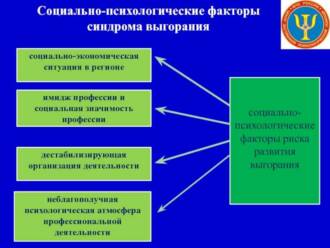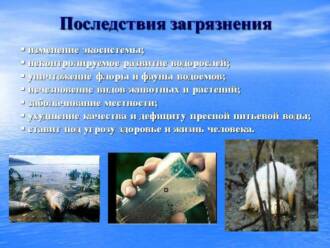
Genetic engineering is the process of altering an organism's genetic material, which can result in new properties and characteristics. However, human intervention in genetics can have serious risks and unpredictable consequences, especially when it comes to animals and insects such as butterflies.
Butterflies play an important role in the ecosystem, serving as pollinators for plants and as food for other animals. However, the genetic engineering of butterflies can disrupt the natural ecological chains and lead to an imbalance in nature. For example, if you change the genetic code of butterflies so that they become more resistant to certain types of pesticides, this can lead to the accumulation of poisons in the food chain and the poisoning of other organisms.
In addition, the genetic engineering of butterflies can lead to the emergence of new species that can compete with existing ones. This can cause a decrease in the abundance and diversity of other species, as well as disrupt the natural processes of selection and evolution. Thus, human intervention in the genetics of butterflies can have far-reaching consequences and lead to major changes in natural communities.
Butterfly genetic engineering threats are not limited to environmental impacts. Changing the genetic material of butterflies can also affect their physiology and behavior. For example, modifying the genes responsible for the coloring of butterflies' wings can lead to changes in their ability to camouflage and protect themselves from predators. This can lead to a decrease in the survival and reproduction of butterflies in the natural environment.
Thus, the genetic engineering of butterflies poses serious threats to environmental sustainability and biodiversity. When developing and applying such technologies, it is necessary to take into account all possible consequences and conduct a thorough study of potential risks. This is the only way to minimize the negative impact of human intervention in genetics and maintain a balance in natural ecosystems.
Threats of genetically engineered butterflies

Genetic engineering of butterflies, despite its potential in various fields such as science, medicine and agriculture, carries with it certain threats and risks.
1. Loss of biodiversity: Changing the genetic code of butterflies can reduce their diversity and threaten the integrity of ecosystems. Modified butterflies can crowd out and outcompete other species, which can lead to an imbalance in nature.
2. Unforeseen consequences: Genetic engineering can have unpredictable consequences in the long run. Modified butterflies can have unexpected effects on the environment, including other organisms and plants. This can lead to undesirable changes in ecosystems.
3. Risk to human health: Changing the genetic code of butterflies can pose a potential threat to human health. For example, modified butterflies can carry genetic changes or viruses that can be harmful to humans or other living organisms.
4. Ethical issues: Genetic engineering of butterflies raises questions of ethics and morality. Interfering with the genetics of organisms may be perceived as wrong or unacceptable. Some people object to such interference, considering it a violation of the natural order and the right to life of all organisms.
Implications of Butterfly Genetic Engineering

Genetic engineering of butterflies can have various consequences, both positive and negative. First, it may lead to the emergence of new species of butterflies with unique properties and colorful colors. It can be interesting for scientific research and give new possibilities for decorative use. However, such changes can disrupt the natural ecosystem and lead to the displacement of wild species.
Secondly, the genetic engineering of butterflies can affect their ability to migrate and reproduce. Changing the genetic material can reduce their ability to fly long distances and impair their reproductive functions. This can affect biodiversity and disrupt the natural breeding and feeding cycles of butterflies.
In addition, the genetic engineering of butterflies can cause mutations and genetic defects that can lead to unpredictable consequences. This can have a negative impact on the health and survival of butterflies, as well as interactions with other animal and plant species. This can lead to an imbalance in the ecosystem and disrupt natural cycles and interactions in nature.
In general, genetic engineering of butterflies has the potential to create new species and properties, but also comes with risks and possible negative consequences for the natural environment. Before conducting such experiments, all possible consequences and risks should be considered, and appropriate precautions and controls should be applied to minimize potential harm to the environment.
Butterfly genetic engineering and the environment

Butterfly genetic engineering is the process of changing the genetic material of these beautiful insects, which can have serious consequences for the environment. Intervention in the genetics of butterflies can lead to changes in their physical characteristics, metamorphoses and behavior, which may adversely affect their ability to survive in natural conditions.
One of the main threats associated with the genetic engineering of butterflies is the potential disruption of the natural balance in ecosystems. Changing the genetic code of butterflies can make them incompatible with other organisms they interact with in their habitat. This can lead to a decrease in the butterfly population, as well as disruption of interactions within the ecosystem, such as pollinators or predators.
In addition, the genetic engineering of butterflies may have long-term environmental implications. Changing the genetic material of butterflies can lead to the emergence of new species or subspecies that can become aggressive indicators in the ecosystem. This can lead to competition with other species and even to the displacement of native populations.
Thus, the genetic engineering of butterflies could have significant environmental implications. It is necessary to take into account all the potential threats and risks associated with such interference, and conduct a thorough study before applying genetic engineering in this area. It is important to balance between scientific research and nature protection in order to preserve the biodiversity and ecological sustainability of our planet.
Ethical aspects of genetic engineering of butterflies

Butterfly genetic engineering raises many ethical questions and dilemmas. One of the main aspects is to interfere with the natural order of things and change the genetic code of the organism. This raises concerns and doubts about potential negative consequences and environmental impacts.
One of the major ethical issues related to the genetic engineering of butterflies is a safety issue. Many experts fear that changing the genetic code of butterflies could lead to unpredictable effects, including the possibility of the emergence of new insect species that could have a negative impact on the ecosystem.
Another important aspect — is a question of animal rights and welfare. Genetic engineering of butterflies may result in changes in their physiology and behavior, which may negatively impact their viability and well-being. Questions arise about how to ensure that the genetic engineering process is painless and safe for the butterflies themselves.
It is also important to take into account social aspects of genetic engineering of butterflies. The introduction of genetically modified organisms into the environment can cause concerns and protests in society, especially among those who are afraid of potential risks and consequences. Therefore, there is a need for broad and transparent discussions to take into account the views of various groups and the public at large.






